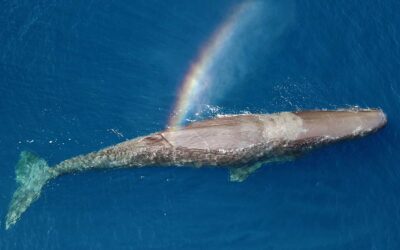First of all, we take a look (or rather, sniff around) at the world of African wild dogs. These predators are largely misunderstood but are incredibly interesting! We talked to Dr. Peter Apps and Megan Chase, who both work on the BioBoundary project from WildEntrust. This project aims to understand more about wild dogs’ behavior, especially when it comes to marking their territories and how they use these sites and scents to communicate with other populations. It’s a technical story, but we bet you’ll love it.
Protecting species that are endangered isn’t always easy, and Francisca Bustos and Magdalena Huerta know all about that. These women are part of Legado Chile, and they research the Southern river otter and freshwater crayfish. Understanding more about these species and the habitat they live in is vital to conserving the ecosystem they live in. So alongside their research, Legado Chile focuses on many more projects, such as the restoration of urban wetlands, as well as collaborations with local communities and universities.
Working with local people is often a great way to encourage change or at least to instill conscious behavior. It isn’t just about the local communities but also about travelers and visitors. How do you enjoy a foreign place whilst also respecting local communities, values, and environments? Stuart Cottrell has been so kind as to explain all of these questions and give tips on how to travel consciously and sustainably in today’s world.
When talking about traveling, you don’t have to go far from home to experience some extraordinary things. Ahamed Jazif, our newest Stargazer, showcases that wonderful things can be experienced close to home, and he talks to us about the importance of photography and visual work in nature conservation.
In Mexico, Oscar Diaz is trying to make a change when it comes to wildfires. If you’ve followed the news in the past years, you might have noticed that wildfires are becoming more frequent and more extreme every year, and that isn’t any different in Mexico. There is a multitude of reasons for this, which we talk about with Oscar. But he isn’t one to sit still and let it all happen. Oscar is at the forefront of fighting wildfires, and his knowledge is a true eye-opener. For example, he explains that forest fires aren’t purely terrible and how human-induced forest fires can actually help mitigate large and uncontrollable fires.
The topic of this issue’s infographic is something you might never have thought about: Marine Noise Pollution. Can you imagine visiting a festival for days on end, with music so loud you can’t even talk to the person standing next to you? For many marine animals out there, it’s much worse than that. Ships, jackhammers, piledriving, and military sonar – all of these sounds are present in the underwater world, and they impact the species living, communicating, foraging, and mating there. And of course, this infographic is once again beautifully illustrated!
Do you know what a forest engineer does? It’s very interesting! Forest engineer Dieter Bratschi takes us into his world and current project: Amazomel. After spending time in Haiti and Bhutan, he now works in the Amazon rainforest with local communities to harvest and sell honey. It’s because of this project that many families can rely on a sustainable source of income that is also environment-friendly – in comparison to the often-seen slash-and-burn practices. Dieter talks about how he got started with this project and how he got started with his foundation – the Non-Timber Forest Products Foundation.
From the Amazon, we cross the earth to Hervey Bay, Australia, where Andrew Ellis and Enorha Guimard pursue their dreams of working with and safeguarding humpback whales. Through science and citizen education, they make sure that whale watching is an activity that helps the whales instead of hinders them. They use their eyes, drones, underwater microphones, and all sorts of cool technology to understand more about humpback whales, and they explain all of that in this issue!
Last but not least, we learn more about Magnus Lundgren and Staffan Widstrand from Sweden’s Wild Five. Magnus and Staffan use the power of photography to change the tide, from hunting to wildlife tourism, for financial gain. The world is full of good examples: gorillas in Rwanda, orangutans in Borneo, elephants in various African countries, and the list goes on. So, where does the tourist money go beyond the organizations themselves? That’s what we discover in this article!
As you can see, we have some spectacular, interesting, and thought-provoking articles for you this time. So check out the magazine now!



